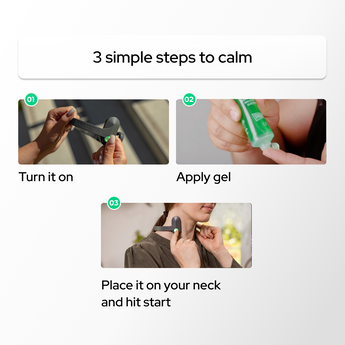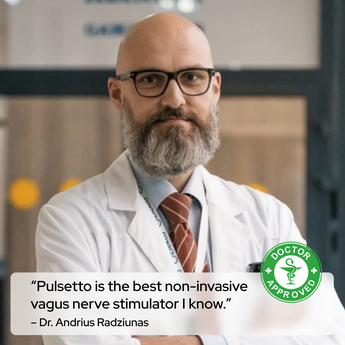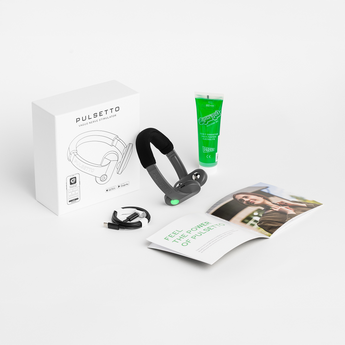Key Takeaways
- Vagus nerve stimulation (VNS) can potentially improve swallowing function.
- Non-invasive VNS techniques include exercises and devices like Pulsetto.
- Natural exercises for vagus nerve health are simple and can be done at home.
- The Pulsetto device, engineered to stimulate the vagus nerve, promotes relaxation in less than 10 minutes.
Can a Damaged or Overactive Vagus Nerve Cause Swallowing Difficulty?
Understanding the Importance of the Vagus Nerve in Swallowing
The vagus nerve is a key part of your nervous system, often called the "wandering nerve" because it extends from the brainstem through the neck and thorax down to the abdomen. It's responsible for a wide range of functions, including controlling heart rate, digestion, and respiratory rate, as well as influencing immune response and mood. Essentially, it helps regulate the parasympathetic nervous system, which manages the body's rest-and-digest activities.
Most importantly, let's understand how the vagus nerve affects swallowing. A damaged or overactive vagus nerve can indeed cause swallowing difficulty, medically known as dysphagia.
Because the vagus nerve is responsible for controlling the muscles for voice and resonance and for sending signals to the throat, esophagus, and stomach, any dysfunction can lead to noticeable issues with swallowing.

The vagus nerve plays a crucial role in the swallowing process.
|
Pulsetto: Revolutionary Vagus Nerve Stimulator Reduce stress and anxiety in just 4 minutes with Pulsetto, the innovative vagus nerve stimulator designed to biohack your parasympathetic nervous system. Clinically proven and FCC certified, Pulsetto has helped 86% of users feel calmer and less anxious within two weeks. Rated 4.5/5 by over 20,137 customers. Enjoy benefits like free worldwide shipping, a 30-day money-back guarantee, a 2-year warranty, and recyclable materials. |
Identifying Symptoms of Vagus Nerve Dysfunctions
- A sensation of food being stuck in the throat or chest.
- Unexpected weight loss due to difficulty swallowing.
- Choking or coughing while eating or drinking.
- Regurgitation of food.
- Voice changes or hoarseness.
If you're experiencing any of these symptoms, it could be a signal that your vagus nerve needs some attention.
The Consequences of Vagus Nerve Damage
When the vagus nerve is not functioning properly, the effects can extend beyond just swallowing difficulties. You might also experience problems with your digestion, heart rate, and respiratory rate. Over time, untreated dysphagia can lead to serious health issues like malnutrition, dehydration, and aspiration pneumonia.


























































